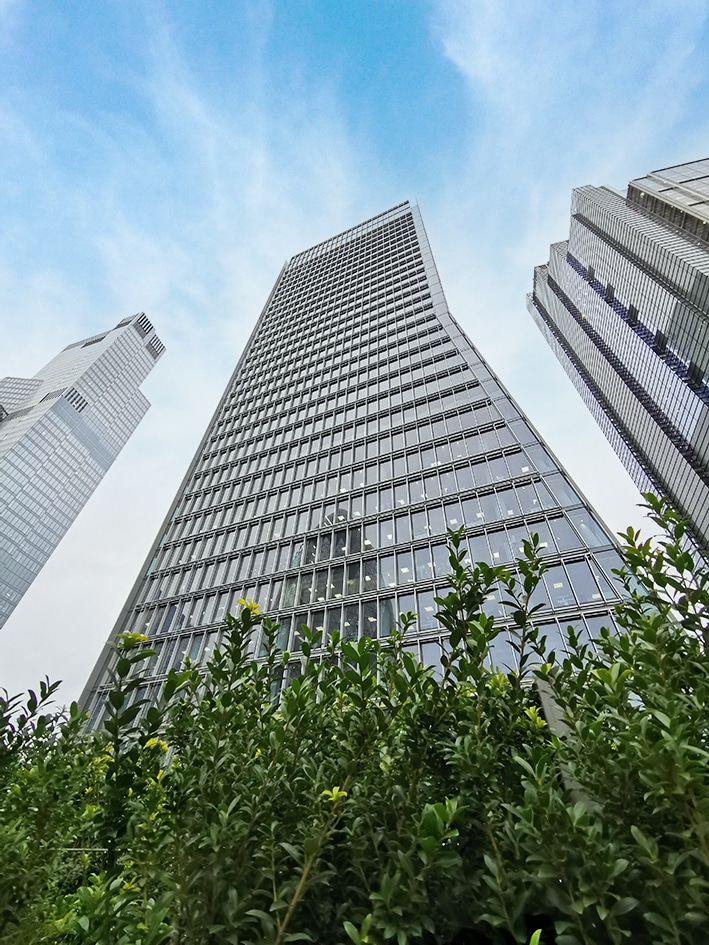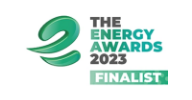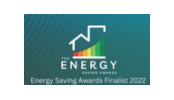[av_section min_height=’custom’ min_height_pc=’25’ min_height_px=’275px’ padding=’small’ custom_margin=’0px’ custom_margin_sync=’true’ color=’main_color’ background=’bg_color’ custom_bg=” background_gradient_color1=” background_gradient_color2=” background_gradient_direction=’vertical’ src=’https://adveco.co/wp-content/uploads/2021/01/header-panel.png’ attachment=’298771′ attachment_size=’full’ attach=’scroll’ position=’center center’ repeat=’stretch’ video=” video_ratio=’16:9′ overlay_opacity=’0.5′ overlay_color=” overlay_pattern=” overlay_custom_pattern=” shadow=’no-border-styling’ bottom_border=’no-border-styling’ bottom_border_diagonal_color=’#333333′ bottom_border_diagonal_direction=” bottom_border_style=” custom_arrow_bg=” id=” custom_class=” aria_label=” av_element_hidden_in_editor=’0′ av_uid=’av-kkbr6lb4′]
[av_one_full first min_height=’av-equal-height-column’ vertical_alignment=’av-align-middle’ space=” row_boxshadow_color=” row_boxshadow_width=’10’ margin=’-100px’ margin_sync=’true’ mobile_breaking=” border=” border_color=” radius=’0px’ radius_sync=’true’ padding=’0px’ padding_sync=’true’ column_boxshadow_color=” column_boxshadow_width=’10’ background=’bg_color’ background_color=” background_gradient_color1=” background_gradient_color2=” background_gradient_direction=’vertical’ src=” attachment=” attachment_size=” background_position=’top left’ background_repeat=’no-repeat’ highlight_size=’1.1′ animation=” link=” linktarget=” link_hover=” title_attr=” alt_attr=” mobile_display=” id=” custom_class=” aria_label=” av_uid=’av-a0iqmib’]
[av_textblock textblock_styling_align=” textblock_styling=” textblock_styling_gap=” textblock_styling_mobile=” size=” av-medium-font-size=” av-small-font-size=” av-mini-font-size=” font_color=’custom’ color=’#ffffff’ id=” custom_class=” template_class=” av_uid=’av-kfmehbm4′ sc_version=’1.0′ admin_preview_bg=”]
Case Studies: 100 Bishopsgate
[/av_textblock]
[/av_one_full][/av_section][av_section min_height=” min_height_pc=’25’ min_height_px=’500px’ padding=’default’ custom_margin=’0px’ custom_margin_sync=’true’ color=’main_color’ background=’bg_color’ custom_bg=” background_gradient_color1=” background_gradient_color2=” background_gradient_direction=’vertical’ src=” attachment=” attachment_size=” attach=’scroll’ position=’top left’ repeat=’no-repeat’ video=” video_ratio=’16:9′ overlay_opacity=’0.5′ overlay_color=” overlay_pattern=” overlay_custom_pattern=” shadow=’no-shadow’ bottom_border=’no-border-styling’ bottom_border_diagonal_color=’#333333′ bottom_border_diagonal_direction=” bottom_border_style=” custom_arrow_bg=” id=” custom_class=” aria_label=” av_element_hidden_in_editor=’0′ av_uid=’av-ps7wef’]
[av_hr class=’default’ icon_select=’yes’ icon=’ue808′ position=’center’ shadow=’no-shadow’ height=’50’ custom_border=’av-border-thin’ custom_width=’50px’ custom_margin_top=’30px’ custom_margin_bottom=’30px’ custom_border_color=” custom_icon_color=” av-desktop-hide=” av-medium-hide=” av-small-hide=” av-mini-hide=” id=” custom_class=” av_uid=’av-68t3ise’]
[av_one_half first min_height=’av-equal-height-column’ vertical_alignment=’av-align-top’ space=” row_boxshadow_color=” row_boxshadow_width=’10’ margin=’0px’ margin_sync=’true’ mobile_breaking=” border=” border_color=” radius=’0px’ radius_sync=’true’ padding=’0px’ padding_sync=’true’ column_boxshadow_color=” column_boxshadow_width=’10’ background=’bg_color’ background_color=” background_gradient_color1=” background_gradient_color2=” background_gradient_direction=’vertical’ src=” attachment=” attachment_size=” background_position=’top left’ background_repeat=’no-repeat’ highlight_size=’1.1′ animation=” link=” linktarget=” link_hover=” title_attr=” alt_attr=” mobile_display=” id=’overview’ custom_class=” aria_label=” av_uid=’av-ocawg7′]
[av_textblock size=” av-medium-font-size=” av-small-font-size=” av-mini-font-size=” font_color=’custom’ color=’#008c15′ id=” custom_class=’alternate’ template_class=” av_uid=’av-kfmcbaem’ sc_version=’1.0′ admin_preview_bg=”]
100 Bishopsgate – The New Benchmark In Sustainable Building
[/av_textblock]
[av_hr class=’invisible’ icon_select=’yes’ icon=’ue808′ font=’entypo-fontello’ position=’center’ shadow=’no-shadow’ height=’20’ custom_border=’av-border-thin’ custom_width=’50px’ custom_margin_top=’30px’ custom_margin_bottom=’30px’ custom_border_color=” custom_icon_color=” id=” custom_class=” av_uid=’av-kkci9yiq’ admin_preview_bg=”]
[av_textblock size=” av-medium-font-size=” av-small-font-size=” av-mini-font-size=” font_color=” color=” id=” custom_class=” template_class=” av_uid=’av-mzj2kn’ sc_version=’1.0′ admin_preview_bg=”]
[/av_textblock]
[av_hr class=’invisible’ icon_select=’yes’ icon=’ue808′ font=’entypo-fontello’ position=’center’ shadow=’no-shadow’ height=’20’ custom_border=’av-border-thin’ custom_width=’50px’ custom_margin_top=’30px’ custom_margin_bottom=’30px’ custom_border_color=” custom_icon_color=” id=” custom_class=” av_uid=’av-kkci9yiq’ admin_preview_bg=”]
[av_textblock size=” av-medium-font-size=” av-small-font-size=” av-mini-font-size=” font_color=” color=” id=” custom_class=” template_class=” av_uid=’av-mzj2kn’ sc_version=’1.0′ admin_preview_bg=”]
100 Bishopsgate is the latest prestige construction project in the financial district of the City of London. Operated by Brookfield Properties, the development is a stunning all-glazed tower offering 37 floors of mixed-use that has been designed and constructed to meet the highest standard of efficiency, achieving an ‘Excellent’ BREEAM rating to maximise sustainability and reduce the carbon footprint over the lifetime of the building.
[/av_textblock]
[av_hr class=’invisible’ icon_select=’yes’ icon=’ue808′ font=’entypo-fontello’ position=’center’ shadow=’no-shadow’ height=’20’ custom_border=’av-border-thin’ custom_width=’50px’ custom_margin_top=’30px’ custom_margin_bottom=’30px’ custom_border_color=” custom_icon_color=” id=” custom_class=” av_uid=’av-kkci9yiq’ admin_preview_bg=”]
[av_textblock textblock_styling_align=” textblock_styling=” textblock_styling_gap=” textblock_styling_mobile=” size=” av-medium-font-size=” av-small-font-size=” av-mini-font-size=” font_color=” color=” id=” custom_class=” template_class=” av_uid=’av-mzj2kn’ sc_version=’1.0′ admin_preview_bg=”]
To achieve this, environmentally conscious systems and materials have been used within the building’s design, construction and ongoing maintenance. Everything from building materials, to occupation sensors and biodiversity, have been addressed to deliver the building’s outstanding sustainability.
Whilst the majority of the building’s heating demands are achieved through the use of photovoltaic panels to generate energy and the large-scale application of heat exchangers to recover any waste energy, there was an additional demand for the provision of domestic hot water (DHW) for the tenants and staff.
As part of this process, Adveco worked with design authority Hilson Moran and consultants Michael J Lonsdale on the provision of the building’s hot water. Adveco’s application design team was tasked with meeting the separate needs of Brookfield Properties and its tenants, with plant facilities that would be built around A.O. Smith BFC high-efficiency gas water heaters. In addition, a roof-top site would allow for the installation of a solar preheat system with dedicated water heaters.
[/av_textblock]
[av_hr class=’invisible’ icon_select=’yes’ icon=’ue808′ font=’entypo-fontello’ position=’center’ shadow=’no-shadow’ height=’20’ custom_border=’av-border-thin’ custom_width=’50px’ custom_margin_top=’30px’ custom_margin_bottom=’30px’ custom_border_color=” custom_icon_color=” id=” custom_class=” av_uid=’av-kkci9yiq’ admin_preview_bg=”]
[av_textblock size=” av-medium-font-size=” av-small-font-size=” av-mini-font-size=” font_color=’custom’ color=’#008c15′ id=” custom_class=’quote-box’ template_class=” av_uid=’av-mzj2kn’ sc_version=’1.0′ admin_preview_bg=”]
Through close partnership, a blend of sustainable and practical applications were designed.
[/av_textblock]
[av_hr class=’invisible’ icon_select=’yes’ icon=’ue808′ font=’entypo-fontello’ position=’center’ shadow=’no-shadow’ height=’20’ custom_border=’av-border-thin’ custom_width=’50px’ custom_margin_top=’30px’ custom_margin_bottom=’30px’ custom_border_color=” custom_icon_color=” id=” custom_class=” av_uid=’av-kkci9yiq’ admin_preview_bg=”]
[av_textblock size=” av-medium-font-size=” av-small-font-size=” av-mini-font-size=” font_color=” color=” id=” custom_class=” template_class=” av_uid=’av-mzj2kn’ sc_version=’1.0′ admin_preview_bg=”]
The solar preheat system consists of four roof-mounted solar collectors with integrated drain back for overheat protection. The collectors feed a 500 litre IT indirect water heater. Here the solar energy is accumulated, with the IT acting as a dedicated solar store providing preheat which then feeds a pair of BFC80 fully room-sealed condensing high-efficiency (97% gross) gas-fired water heaters.
Smart controls and system management not only help ensure the solar thermal application remains operational, but ensures the efficiency needed to meet the sustainability targets of the building.
The solar system uses a smart differential temperature controller to manage the solar station pump. This controller activates the pump when the solar collector sensor temperature is higher than that of the solar preheat sensor, transferring heat from the collector to the preheat tank coil until the tank reaches its set-point reading, or if the solar intensity drops and the collector cools to the Preheat temperature.
[/av_textblock]
[av_hr class=’invisible’ icon_select=’yes’ icon=’ue808′ font=’entypo-fontello’ position=’center’ shadow=’no-shadow’ height=’20’ custom_border=’av-border-thin’ custom_width=’50px’ custom_margin_top=’30px’ custom_margin_bottom=’30px’ custom_border_color=” custom_icon_color=” id=” custom_class=” av_uid=’av-kkci9yiq’ admin_preview_bg=”]
[av_textblock size=” av-medium-font-size=” av-small-font-size=” av-mini-font-size=” font_color=” color=” id=” custom_class=” template_class=” av_uid=’av-mzj2kn’ sc_version=’1.0′ admin_preview_bg=”]
Smart solar control also enables the exchange pump to be used to transfer heat from the solar preheat to the water heater in periods of low DHW usage. This balancing is critical if the solar thermal system is to operate efficiently without wasting generated energy. The solar control will sense if the preheat tank reaches 70°C and, if the monitored after-heater temperature is less (60-65°C), the exchange pump will be activated forcing preheated water to the BFCs. The pump turns off once the pre-heat temperature drops to 60°C. This ensures that the solar energy is used most advantageously, effectively turning the IT tank into a combined solar preheat, extending the pre-heat volume and allowing efficient use of solar energy. Without this balancing, the thermal losses could be equivalent to turning off half of the building’s solar thermal collectors.
As well as the smart controls, the solar thermal system offers ongoing monitoring for improved management with a volt free alarm contact on the BFCs for general fault indication on the BMS. Each roof-mounted solar collector bank is also dedicated to one solar coil to allow uninterrupted drain back for stagnation protection. Should demand for DHW drop, solar thermal collectors can, unless drained, be prone to stagnation where the solar fluid overheats and takes on the consistency of tar within the collector. This requires a lengthy cleaning process and can cause considerable damage requiring costly repairs. At 100 Bishopsgate, when the preheat tank reaches 70°C, the solar pump stops, and the natural head of solar fluid flows in reverse back into the coil port and fills the drain back tank, emptying and protecting the solar collector.
[/av_textblock]
[av_hr class=’invisible’ icon_select=’yes’ icon=’ue808′ font=’entypo-fontello’ position=’center’ shadow=’no-shadow’ height=’20’ custom_border=’av-border-thin’ custom_width=’50px’ custom_margin_top=’30px’ custom_margin_bottom=’30px’ custom_border_color=” custom_icon_color=” id=” custom_class=” av_uid=’av-kkci9yiq’ admin_preview_bg=”]
[av_textblock size=” av-medium-font-size=” av-small-font-size=” av-mini-font-size=” font_color=” color=” id=” custom_class=” template_class=” av_uid=’av-mzj2kn’ sc_version=’1.0′ admin_preview_bg=”]
At 181 metres in height, available roof space for solar thermal is ultimately limited in comparison to the total square footage of the building and the number of people occupying the building. To address periods of high DHW demand, where solar thermal cannot meet all the building’s requirements, Adveco designed, supplied and commissioned an application based on a series of A.O. Smith BFC Cyclone condensing gas water heaters.
Fully room-sealed, and with versatile flue options that allow this water heater to be placed almost anywhere, the BFCs were sited in plant rooms located on the building’s lower floors. A logical choice for the provision of large scale, near-instantaneous hot water demands, the BFCs are fitted with an automatic gas/air premix burning system including burner modulation, which enables the BFC to be highly efficient (97% gross). Despite using natural gas, this level of efficiency helps support the buildings BREEM rating. With the BFCs connected into the BMS, the building management team can monitor almost 50 parameters from temperatures in the appliance to burning hours, allowing for greater control and a more cost-effective option for delivering peak hour demands for hot water when compared to electrical energy.
[/av_textblock]
[av_hr class=’invisible’ icon_select=’yes’ icon=’ue808′ font=’entypo-fontello’ position=’center’ shadow=’no-shadow’ height=’20’ custom_border=’av-border-thin’ custom_width=’50px’ custom_margin_top=’30px’ custom_margin_bottom=’30px’ custom_border_color=” custom_icon_color=” id=” custom_class=” av_uid=’av-kkci9yiq’ admin_preview_bg=”]
[av_textblock size=” av-medium-font-size=” av-small-font-size=” av-mini-font-size=” font_color=” color=” id=” custom_class=” template_class=” av_uid=’av-mzj2kn’ sc_version=’1.0′ admin_preview_bg=”]
100 Bishopsgate today stands as a benchmark for what can be achieved by embracing the advantages of a sustainable approach to construction and operation. Its greatest success is that it does so without forgetting that, first and foremost, its role is to provide an exceptionally modern, comfortable working environment for its tenants.
[/av_textblock]
[av_hr class=’invisible’ icon_select=’yes’ icon=’ue808′ font=’entypo-fontello’ position=’center’ shadow=’no-shadow’ height=’20’ custom_border=’av-border-thin’ custom_width=’50px’ custom_margin_top=’30px’ custom_margin_bottom=’30px’ custom_border_color=” custom_icon_color=” id=” custom_class=” av_uid=’av-kkci9yiq’ admin_preview_bg=”]
[av_textblock size=” av-medium-font-size=” av-small-font-size=” av-mini-font-size=” font_color=” color=” id=” custom_class=” template_class=” av_uid=’av-mzj2kn’ sc_version=’1.0′ admin_preview_bg=”]
Visit:
Michael Lonsdale
[/av_textblock]
[av_hr class=’invisible’ icon_select=’yes’ icon=’ue808′ font=’entypo-fontello’ position=’center’ shadow=’no-shadow’ height=’20’ custom_border=’av-border-thin’ custom_width=’50px’ custom_margin_top=’30px’ custom_margin_bottom=’30px’ custom_border_color=” custom_icon_color=” id=” custom_class=” av_uid=’av-kkci9yiq’ admin_preview_bg=”]
[/av_one_half][av_one_half min_height=” vertical_alignment=” space=” row_boxshadow=” row_boxshadow_color=” row_boxshadow_width=’10’ custom_margin=” margin=’0px’ mobile_breaking=” border=” border_color=” radius=’0px’ padding=’0px’ column_boxshadow=” column_boxshadow_color=” column_boxshadow_width=’10’ background=’bg_color’ background_color=” background_gradient_color1=” background_gradient_color2=” background_gradient_direction=’vertical’ src=” background_position=’top left’ background_repeat=’no-repeat’ highlight=” highlight_size=” animation=” link=” linktarget=” link_hover=” title_attr=” alt_attr=” mobile_display=” id=” custom_class=” aria_label=” av_uid=’av-kgkohj’]
[av_hr class=’invisible’ icon_select=’yes’ icon=’ue808′ font=’entypo-fontello’ position=’center’ shadow=’no-shadow’ height=’20’ custom_border=’av-border-thin’ custom_width=’50px’ custom_margin_top=’30px’ custom_margin_bottom=’30px’ custom_border_color=” custom_icon_color=” id=” custom_class=” av_uid=’av-kkci9yiq’ admin_preview_bg=”]
[av_image src=’https://adveco.co/wp-content/uploads/2021/12/Adveco-100-Bishopsgate-72dpi-02.jpg’ attachment=’304375′ attachment_size=’full’ copyright=” caption=” image_size=” styling=” align=’center’ font_size=” overlay_opacity=’0.4′ overlay_color=’#000000′ overlay_text_color=’#ffffff’ animation=’no-animation’ hover=” appearance=” link=” target=” title_attr=” alt_attr=” img_scrset=” lazy_loading=’disabled’ id=” custom_class=” template_class=” av_element_hidden_in_editor=’0′ av_uid=’av-8oamkwu’ sc_version=’1.0′ admin_preview_bg=”][/av_image]
[av_hr class=’invisible’ icon_select=’yes’ icon=’ue808′ font=’entypo-fontello’ position=’center’ shadow=’no-shadow’ height=’20’ custom_border=’av-border-thin’ custom_width=’50px’ custom_margin_top=’30px’ custom_margin_bottom=’30px’ custom_border_color=” custom_icon_color=” id=” custom_class=” av_uid=’av-kkci9yiq’ admin_preview_bg=”]
[av_image src=’https://adveco.co/wp-content/uploads/2021/12/Adveco-100-Bishopsgate-72dpi-06.jpg’ attachment=’304376′ attachment_size=’full’ copyright=” caption=” image_size=” styling=” align=’center’ font_size=” overlay_opacity=’0.4′ overlay_color=’#000000′ overlay_text_color=’#ffffff’ animation=’no-animation’ hover=” appearance=” link=” target=” title_attr=” alt_attr=” img_scrset=” lazy_loading=’disabled’ id=” custom_class=” template_class=” av_element_hidden_in_editor=’0′ av_uid=’av-8oamkwu’ sc_version=’1.0′ admin_preview_bg=”][/av_image]
[av_hr class=’invisible’ icon_select=’yes’ icon=’ue808′ font=’entypo-fontello’ position=’center’ shadow=’no-shadow’ height=’20’ custom_border=’av-border-thin’ custom_width=’50px’ custom_margin_top=’30px’ custom_margin_bottom=’30px’ custom_border_color=” custom_icon_color=” id=” custom_class=” av_uid=’av-kkci9yiq’ admin_preview_bg=”]
[av_image src=’https://adveco.co/wp-content/uploads/2021/12/Adveco-100-Bishopsgate-72dpi-03.jpg’ attachment=’304377′ attachment_size=’full’ copyright=” caption=” image_size=” styling=” align=’center’ font_size=” overlay_opacity=’0.4′ overlay_color=’#000000′ overlay_text_color=’#ffffff’ animation=’no-animation’ hover=” appearance=” link=” target=” title_attr=” alt_attr=” img_scrset=” lazy_loading=’disabled’ id=” custom_class=” template_class=” av_element_hidden_in_editor=’0′ av_uid=’av-8oamkwu’ sc_version=’1.0′ admin_preview_bg=”][/av_image]
[av_hr class=’invisible’ icon_select=’yes’ icon=’ue808′ font=’entypo-fontello’ position=’center’ shadow=’no-shadow’ height=’40’ custom_border=’av-border-thin’ custom_width=’50px’ custom_margin_top=’30px’ custom_margin_bottom=’30px’ custom_border_color=” custom_icon_color=” id=” custom_class=” av_uid=’av-kkci9yiq’ admin_preview_bg=”]
[av_textblock size=” av-medium-font-size=” av-small-font-size=” av-mini-font-size=” font_color=’custom’ color=’#008c15′ id=” custom_class=’alternate’ av_uid=’av-kfmcbaem’ admin_preview_bg=”]
Want to find out more?
[/av_textblock]
[av_hr class=’invisible’ icon_select=’yes’ icon=’ue808′ font=’entypo-fontello’ position=’center’ shadow=’no-shadow’ height=’20’ custom_border=’av-border-thin’ custom_width=’50px’ custom_margin_top=’30px’ custom_margin_bottom=’30px’ custom_border_color=” custom_icon_color=” id=” custom_class=” av_uid=’av-kkci9yiq’ admin_preview_bg=”]
[av_codeblock wrapper_element=” wrapper_element_attributes=” codeblock_type=” alb_description=” id=’contact-form-block’ custom_class=” av_uid=’av-kkchkw1c’]
[/av_codeblock]
[av_hr class=’invisible’ icon_select=’yes’ icon=’ue808′ font=’entypo-fontello’ position=’center’ shadow=’no-shadow’ height=’40’ custom_border=’av-border-thin’ custom_width=’50px’ custom_margin_top=’30px’ custom_margin_bottom=’30px’ custom_border_color=” custom_icon_color=” id=” custom_class=” av_uid=’av-kkci9yiq’ admin_preview_bg=”]
[av_textblock size=” av-medium-font-size=” av-small-font-size=” av-mini-font-size=” font_color=’custom’ color=’#008c15′ id=” custom_class=’alternate’ av_uid=’av-kfmcbaem’ admin_preview_bg=”]
Product brochure download
[/av_textblock]
[av_hr class=’invisible’ icon_select=’yes’ icon=’ue808′ font=’entypo-fontello’ position=’center’ shadow=’no-shadow’ height=’20’ custom_border=’av-border-thin’ custom_width=’50px’ custom_margin_top=’30px’ custom_margin_bottom=’30px’ custom_border_color=” custom_icon_color=” id=” custom_class=” av_uid=’av-kkci9yiq’ admin_preview_bg=”]
[av_image src=’https://adveco.co/wp-content/uploads/2023/12/ADVECO-Product-Range-Brochure-2024-web-1.webp’ attachment=’299483′ attachment_size=’full’ copyright=” caption=” styling=” align=’left’ font_size=” overlay_opacity=’0.4′ overlay_color=’#000000′ overlay_text_color=’#ffffff’ animation=’no-animation’ hover=” appearance=” link=’manually,https://adveco.co/wp-content/uploads/2021/07/ADVECO-2022-brochure-010122.pdf’ target=’_blank’ title_attr=” alt_attr=” id=” custom_class=” av_element_hidden_in_editor=’0′ av_uid=’av-kkcro1ek’ admin_preview_bg=”][/av_image]
[av_hr class=’invisible’ icon_select=’yes’ icon=’ue808′ font=’entypo-fontello’ position=’center’ shadow=’no-shadow’ height=’20’ custom_border=’av-border-thin’ custom_width=’50px’ custom_margin_top=’30px’ custom_margin_bottom=’30px’ custom_border_color=” custom_icon_color=” id=” custom_class=” av_uid=’av-kkci9yiq’ admin_preview_bg=”]
[av_textblock size=” av-medium-font-size=” av-small-font-size=” av-mini-font-size=” font_color=” color=” id=” custom_class=” av_uid=’av-kkcrgemb’ admin_preview_bg=”]
[/av_textblock]
[/av_one_half]
[/av_section]
[av_section min_height=” min_height_pc=’25’ min_height_px=’500px’ padding=’default’ custom_margin=’0px’ custom_margin_sync=’true’ color=’main_color’ background=’bg_color’ custom_bg=” background_gradient_color1=” background_gradient_color2=” background_gradient_direction=’vertical’ src=” attachment=” attachment_size=” attach=’scroll’ position=’top left’ repeat=’no-repeat’ video=” video_ratio=’16:9′ overlay_opacity=’0.5′ overlay_color=” overlay_pattern=” overlay_custom_pattern=” shadow=’no-border-styling’ bottom_border=’no-border-styling’ bottom_border_diagonal_color=’#333333′ bottom_border_diagonal_direction=” bottom_border_style=” custom_arrow_bg=” id=” custom_class=” aria_label=” av_element_hidden_in_editor=’0′ av_uid=’av-7kytu5u’]
[av_one_full first min_height=” vertical_alignment=’av-align-top’ space=” row_boxshadow_color=” row_boxshadow_width=’10’ margin=’0px’ margin_sync=’true’ mobile_breaking=” border=” border_color=” radius=’0px’ radius_sync=’true’ padding=’0px’ padding_sync=’true’ column_boxshadow_color=” column_boxshadow_width=’10’ background=’bg_color’ background_color=” background_gradient_color1=” background_gradient_color2=” background_gradient_direction=’vertical’ src=” attachment=” attachment_size=” background_position=’top left’ background_repeat=’no-repeat’ highlight_size=’1.1′ animation=” link=” linktarget=” link_hover=” title_attr=” alt_attr=” mobile_display=” id=’related’ custom_class=” aria_label=” av_uid=’av-9drwcn’]
[av_textblock size=” av-medium-font-size=” av-small-font-size=” av-mini-font-size=” font_color=’custom’ color=’#008c15′ id=” custom_class=’alternate’ av_uid=’av-kfmcbaem’ admin_preview_bg=”]
Other case studies
[/av_textblock]
[/av_one_full][av_one_third first min_height=’av-equal-height-column’ vertical_alignment=’av-align-top’ space=” row_boxshadow_color=” row_boxshadow_width=’10’ margin=’0px’ margin_sync=’true’ mobile_breaking=” border=’1′ border_color=’#707070′ radius=’0px’ radius_sync=’true’ padding=’20px’ padding_sync=’true’ column_boxshadow_color=” column_boxshadow_width=’10’ background=’bg_color’ background_color=’#ffffff’ background_gradient_color1=” background_gradient_color2=” background_gradient_direction=’vertical’ src=” attachment=” attachment_size=” background_position=’top left’ background_repeat=’no-repeat’ highlight_size=’1.1′ animation=” link=’portfolio,296606′ linktarget=” link_hover=” title_attr=” alt_attr=” mobile_display=” id=” custom_class=” aria_label=” av_uid=’av-kkclbwik’]
[av_textblock size=” av-medium-font-size=” av-small-font-size=” av-mini-font-size=” font_color=’custom’ color=’#008c15′ id=” custom_class=’sectors-text’ av_uid=’av-kfmcbaem’ admin_preview_bg=”]
Looks Matter
19th century grade II listed building
[/av_textblock]
[av_image src=’https://adveco.co/wp-content/uploads/2021/02/Looks-Matter.png’ attachment=’300325′ attachment_size=’full’ copyright=” caption=” styling=” align=’center’ font_size=” overlay_opacity=’0.4′ overlay_color=’#000000′ overlay_text_color=’#ffffff’ animation=’no-animation’ hover=” appearance=” link=” target=” title_attr=” alt_attr=” id=” custom_class=” av_element_hidden_in_editor=’0′ av_uid=’av-kkcliw0z’ admin_preview_bg=”][/av_image]
[av_textblock size=” av-medium-font-size=” av-small-font-size=” av-mini-font-size=” font_color=” color=’#008c15′ id=” custom_class=’sectors-text’ av_uid=’av-kfmcbaem’ admin_preview_bg=”]
[/av_textblock]
[av_hr class=’invisible’ icon_select=’yes’ icon=’ue808′ font=’entypo-fontello’ position=’center’ shadow=’no-shadow’ height=’10’ custom_border=’av-border-thin’ custom_width=’50px’ custom_margin_top=’30px’ custom_margin_bottom=’30px’ custom_border_color=” custom_icon_color=” id=” custom_class=” av_uid=’av-kkmfa06l’ admin_preview_bg=”]
[av_button label=’Learn more’ icon_select=’no’ icon=’ue800′ font=’entypo-fontello’ link=’portfolio,296606′ link_target=” size=’small’ position=’center’ label_display=” title_attr=” color_options=” color=’theme-color’ custom_bg=’#444444′ custom_font=’#ffffff’ btn_color_bg=’theme-color’ btn_custom_grad_direction=’vertical’ btn_custom_grad_1=’#000000′ btn_custom_grad_2=’#ffffff’ btn_custom_grad_3=” btn_custom_grad_opacity=’0.7′ btn_custom_bg=’#444444′ btn_color_bg_hover=’theme-color-highlight’ btn_custom_bg_hover=’#444444′ btn_color_font=’theme-color’ btn_custom_font=’#ffffff’ btn_color_font_hover=’white’ btn_custom_font_hover=’#ffffff’ border=” border_width=” border_width_sync=’true’ border_color=” border_radius=” border_radius_sync=’true’ box_shadow=” box_shadow_style=’0px,0px,0px,0px’ box_shadow_color=” hover_opacity=” sonar_effect_effect=” sonar_effect_color=” sonar_effect_duration=’1′ sonar_effect_scale=” sonar_effect_opac=’0.5′ id=” custom_class=” template_class=” av_uid=’av-kfmdxbbp’ sc_version=’1.0′ admin_preview_bg=”]
[/av_one_third][av_one_third min_height=’av-equal-height-column’ vertical_alignment=’av-align-top’ space=” row_boxshadow_color=” row_boxshadow_width=’10’ margin=’0px’ margin_sync=’true’ mobile_breaking=” border=’1′ border_color=’#707070′ radius=’0px’ radius_sync=’true’ padding=’20px’ padding_sync=’true’ column_boxshadow_color=” column_boxshadow_width=’10’ background=’bg_color’ background_color=’#ffffff’ background_gradient_color1=” background_gradient_color2=” background_gradient_direction=’vertical’ src=” attachment=” attachment_size=” background_position=’top left’ background_repeat=’no-repeat’ highlight_size=’1.1′ animation=” link=’portfolio,295375′ linktarget=” link_hover=” title_attr=” alt_attr=” mobile_display=” id=” custom_class=” aria_label=” av_uid=’av-kkclbwik’]
[av_textblock size=” av-medium-font-size=” av-small-font-size=” av-mini-font-size=” font_color=’custom’ color=’#008c15′ id=” custom_class=’sectors-text’ av_uid=’av-kfmcbaem’ admin_preview_bg=”]
First Response
London Fire Brigade
[/av_textblock]
[av_image src=’https://adveco.co/wp-content/uploads/2019/09/case-study-London-Fire-Brigade-2.jpg’ attachment=’300307′ attachment_size=’full’ copyright=” caption=” image_size=” styling=” align=’center’ font_size=” overlay_opacity=’0.4′ overlay_color=’#000000′ overlay_text_color=’#ffffff’ animation=’no-animation’ hover=” appearance=” link=” target=” title_attr=” alt_attr=” img_scrset=” lazy_loading=’disabled’ id=” custom_class=” template_class=” av_element_hidden_in_editor=’0′ av_uid=’av-kkcliw0z’ sc_version=’1.0′ admin_preview_bg=”][/av_image]
[av_textblock textblock_styling_align=” textblock_styling=” textblock_styling_gap=” textblock_styling_mobile=” size=” av-medium-font-size=” av-small-font-size=” av-mini-font-size=” font_color=” color=’#008c15′ id=” custom_class=’sectors-text’ template_class=” av_uid=’av-kfmcbaem’ sc_version=’1.0′ admin_preview_bg=”]
[/av_textblock]
[av_hr class=’invisible’ icon_select=’yes’ icon=’ue808′ font=’entypo-fontello’ position=’center’ shadow=’no-shadow’ height=’10’ custom_border=’av-border-thin’ custom_width=’50px’ custom_margin_top=’30px’ custom_margin_bottom=’30px’ custom_border_color=” custom_icon_color=” id=” custom_class=” av_uid=’av-kkmfa06l’ admin_preview_bg=”]
[av_button label=’Learn more’ icon_select=’no’ icon=’ue800′ font=’entypo-fontello’ link=’portfolio,295375′ link_target=” size=’small’ position=’center’ label_display=” title_attr=” color_options=” color=’theme-color’ custom_bg=’#444444′ custom_font=’#ffffff’ btn_color_bg=’theme-color’ btn_custom_grad_direction=’vertical’ btn_custom_grad_1=’#000000′ btn_custom_grad_2=’#ffffff’ btn_custom_grad_3=” btn_custom_grad_opacity=’0.7′ btn_custom_bg=’#444444′ btn_color_bg_hover=’theme-color-highlight’ btn_custom_bg_hover=’#444444′ btn_color_font=’theme-color’ btn_custom_font=’#ffffff’ btn_color_font_hover=’white’ btn_custom_font_hover=’#ffffff’ border=” border_width=” border_width_sync=’true’ border_color=” border_radius=” border_radius_sync=’true’ box_shadow=” box_shadow_style=’0px,0px,0px,0px’ box_shadow_color=” hover_opacity=” sonar_effect_effect=” sonar_effect_color=” sonar_effect_duration=’1′ sonar_effect_scale=” sonar_effect_opac=’0.5′ id=” custom_class=” template_class=” av_uid=’av-kfmdxbbp’ sc_version=’1.0′ admin_preview_bg=”]
[/av_one_third][av_one_third min_height=’av-equal-height-column’ vertical_alignment=’av-align-top’ space=” row_boxshadow_color=” row_boxshadow_width=’10’ margin=’0px’ margin_sync=’true’ mobile_breaking=” border=’1′ border_color=’#707070′ radius=’0px’ radius_sync=’true’ padding=’20px’ padding_sync=’true’ column_boxshadow_color=” column_boxshadow_width=’10’ background=’bg_color’ background_color=’#ffffff’ background_gradient_color1=” background_gradient_color2=” background_gradient_direction=’vertical’ src=” attachment=” attachment_size=” background_position=’top left’ background_repeat=’no-repeat’ highlight_size=’1.1′ animation=” link=’portfolio,6228′ linktarget=” link_hover=” title_attr=” alt_attr=” mobile_display=” id=” custom_class=” aria_label=” av_uid=’av-kkclbwik’]
[av_textblock textblock_styling_align=” textblock_styling=” textblock_styling_gap=” textblock_styling_mobile=” size=” av-medium-font-size=” av-small-font-size=” av-mini-font-size=” font_color=’custom’ color=’#008c15′ id=” custom_class=’sectors-text’ template_class=” av_uid=’av-kfmcbaem’ sc_version=’1.0′ admin_preview_bg=”]
Bromsgrove Leisure Centre
Hot water for showers
[/av_textblock]
[av_image src=’https://adveco.co/wp-content/uploads/2021/02/Bromsgrove-Leisure-Centre.png’ attachment=’300322′ attachment_size=’full’ copyright=” caption=” styling=” align=’center’ font_size=” overlay_opacity=’0.4′ overlay_color=’#000000′ overlay_text_color=’#ffffff’ animation=’no-animation’ hover=” appearance=” link=” target=” title_attr=” alt_attr=” id=” custom_class=” av_element_hidden_in_editor=’0′ av_uid=’av-kkcliw0z’ admin_preview_bg=”][/av_image]
[av_textblock textblock_styling_align=” textblock_styling=” textblock_styling_gap=” textblock_styling_mobile=” size=” av-medium-font-size=” av-small-font-size=” av-mini-font-size=” font_color=” color=’#008c15′ id=” custom_class=’sectors-text’ template_class=” av_uid=’av-kfmcbaem’ sc_version=’1.0′ admin_preview_bg=”]
[/av_textblock]
[av_hr class=’invisible’ icon_select=’yes’ icon=’ue808′ font=’entypo-fontello’ position=’center’ shadow=’no-shadow’ height=’10’ custom_border=’av-border-thin’ custom_width=’50px’ custom_margin_top=’30px’ custom_margin_bottom=’30px’ custom_border_color=” custom_icon_color=” id=” custom_class=” av_uid=’av-kkmfa06l’ admin_preview_bg=”]
[av_button label=’Learn more’ icon_select=’no’ icon=’ue800′ font=’entypo-fontello’ link=’portfolio,6228′ link_target=” size=’small’ position=’center’ label_display=” title_attr=” color_options=” color=’theme-color’ custom_bg=’#444444′ custom_font=’#ffffff’ btn_color_bg=’theme-color’ btn_custom_grad_direction=’vertical’ btn_custom_grad_1=’#000000′ btn_custom_grad_2=’#ffffff’ btn_custom_grad_3=” btn_custom_grad_opacity=’0.7′ btn_custom_bg=’#444444′ btn_color_bg_hover=’theme-color-highlight’ btn_custom_bg_hover=’#444444′ btn_color_font=’theme-color’ btn_custom_font=’#ffffff’ btn_color_font_hover=’white’ btn_custom_font_hover=’#ffffff’ border=” border_width=” border_width_sync=’true’ border_color=” border_radius=” border_radius_sync=’true’ box_shadow=” box_shadow_style=’0px,0px,0px,0px’ box_shadow_color=” hover_opacity=” sonar_effect_effect=” sonar_effect_color=” sonar_effect_duration=’1′ sonar_effect_scale=” sonar_effect_opac=’0.5′ id=” custom_class=” template_class=” av_uid=’av-kfmdxbbp’ sc_version=’1.0′ admin_preview_bg=”]
[/av_one_third]
[/av_section]
[av_section min_height=” min_height_pc=’25’ min_height_px=’500px’ padding=’small’ custom_margin=’0px’ custom_margin_sync=’true’ color=’main_color’ background=’bg_color’ custom_bg=” background_gradient_color1=” background_gradient_color2=” background_gradient_direction=’vertical’ src=’https://adveco.co/wp-content/uploads/2021/01/header-panel.png’ attachment=’298771′ attachment_size=’full’ attach=’scroll’ position=’center center’ repeat=’stretch’ video=” video_ratio=’16:9′ overlay_opacity=’0.5′ overlay_color=” overlay_pattern=” overlay_custom_pattern=” shadow=’no-border-styling’ bottom_border=’no-border-styling’ bottom_border_diagonal_color=’#333333′ bottom_border_diagonal_direction=” bottom_border_style=” custom_arrow_bg=” id=” custom_class=” aria_label=” av_element_hidden_in_editor=’0′ av_uid=’av-kfmegn63′]
[av_textblock size=” av-medium-font-size=” av-small-font-size=” av-mini-font-size=” font_color=’custom’ color=’#ffffff’ id=” custom_class=” av_uid=’av-kfmehbm4′ admin_preview_bg=”]
Adveco Ltd. – Expertly Engineered For You
Design, supply and support for commercial hot water, heating and low carbon applications
[/av_textblock]
[av_button label=’Enquire Now’ icon_select=’no’ icon=’ue800′ font=’entypo-fontello’ link=’page,298675′ link_target=” size=’small’ position=’center’ label_display=” title_attr=” color_options=” color=’theme-color’ custom_bg=’#444444′ custom_font=’#ffffff’ btn_color_bg=’theme-color’ btn_custom_grad_direction=’vertical’ btn_custom_grad_1=’#000000′ btn_custom_grad_2=’#ffffff’ btn_custom_grad_3=” btn_custom_grad_opacity=’0.7′ btn_custom_bg=’#444444′ btn_color_bg_hover=’theme-color-highlight’ btn_custom_bg_hover=’#444444′ btn_color_font=’theme-color’ btn_custom_font=’#ffffff’ btn_color_font_hover=’white’ btn_custom_font_hover=’#ffffff’ border=” border_width=” border_width_sync=’true’ border_color=” border_radius=” border_radius_sync=’true’ box_shadow=” box_shadow_style=’0px,0px,0px,0px’ box_shadow_color=” hover_opacity=” sonar_effect_effect=” sonar_effect_color=” sonar_effect_duration=’1′ sonar_effect_scale=” sonar_effect_opac=’0.5′ id=’#form’ custom_class=” template_class=” av_uid=’av-kfmdxbbp’ sc_version=’1.0′ admin_preview_bg=”]
[/av_section]
















